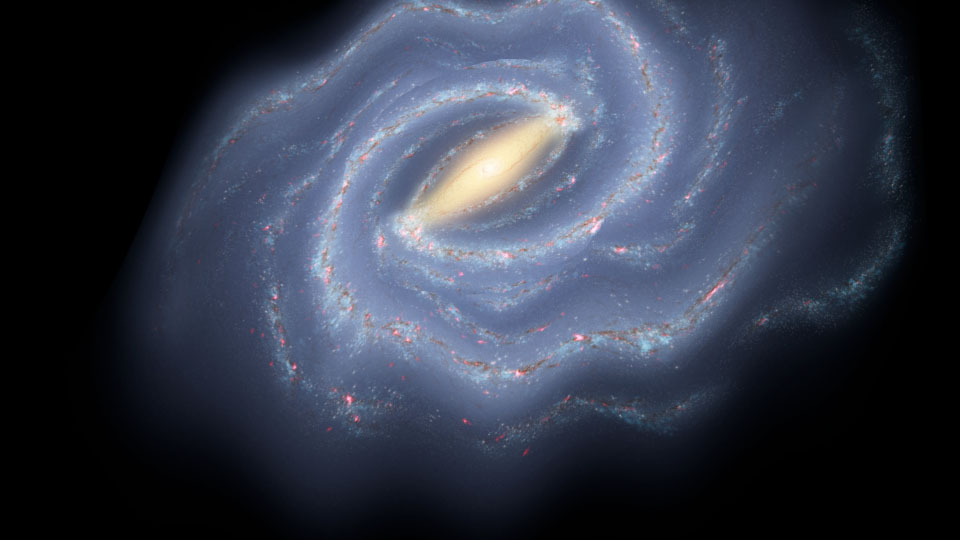| Sep 23, 2022 |
|
|
|
(Nanowerk News) Using data from the Gaia space telescope, a team led by researchers at Lund University in Sweden has shown that large parts of the Milky Way’s outer disk vibrate. The ripples are caused by a dwarf galaxy, now seen in the constellation Sagittarius, that shook our galaxy as it passed by hundreds of millions of years ago.
|
|
Our cosmic home, the Milky Way, contains between 100 and 400 billion stars. Astronomers believe that the galaxy was born 13.6 billion years ago, emerging from a rotating cloud of gas composed of hydrogen and helium. Over billions of years, the gas then collected in a rotating disk where the stars, such as our sun, were formed.
|
|
In a new study published in Monthly Notices of the Royal Astronomical Society (“The disturbed outer Milky Way disc”), the research team presents their findings about the stars in the outer regions of the galactic disk.
|
 |
| (Illustration: NASA JPL-Caltech R. Hurt, SSC Caltech)
|
|
“We can see that these stars wobble and move up and down at different speeds. When the dwarf galaxy Sagittarius passed the Milky Way, it created wave motions in our galaxy, a little bit like when a stone is dropped into a pond”, Paul McMillan, the astronomy researcher at Lund Observatory who led the study, explains.
|
|
By using data from the European space telescope Gaia, the research team was able to study a much larger area of the Milky Way’s disk than was previously possible. By measuring how strong the ripples are in different parts of the disc, the researchers have begun to piece together a complex puzzle, providing clues about Sagittarius’ history and orbit around our home galaxy.
|
|
“At the moment, Sagittarius is slowly being torn apart, but 1-2 billion years ago it was significantly larger, probably around 20 percent of the mass of the Milky Way’s disk”, says Paul McMillan.
|
|
The researchers were surprised by how much of the Milky Way they could study using the data from Gaia. To date the telescope, which has been in operation since 2013, has measured the movement across the sky of approximately two billion stars and the movement towards or away from us of 33 million.
|
|
“With this new discovery, we can study the Milky Way in the same way that geologists draw conclusions about the structure of the Earth from the seismic waves that travel through it. This type of “galactic seismology” will teach us a lot about our home galaxy and its evolution”, Paul McMillan concludes.
|


